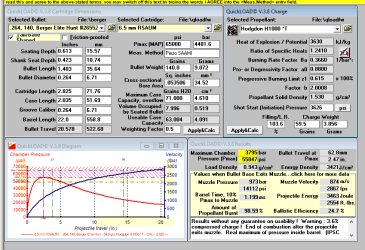140gn Berger elite hunter. -20 off lands. Shoulder bump 2-3thou. Whidden dies, co-ax press, flame anneal every time, V4 auto Trickler A&D scale.
I do have bore scope.
I was using rubbing alcohol in chamber thinking maybe I had oil residue left over from cleaning barrel, not using it to clean barrel. Cleaning barrel now after every outing
Using wipe out and accelerator for cleaning, or Iosso bore past. Everything is squeaky clean..
I did hammer some of that brass pretty good, also did a powder test/work up before fire forming/virgin brass cause I just didn't know that's not the right way. I still have 50 pieces unfired so maybe I'll start over the right way and see what happens.
I do have bore scope.
I was using rubbing alcohol in chamber thinking maybe I had oil residue left over from cleaning barrel, not using it to clean barrel. Cleaning barrel now after every outing
Using wipe out and accelerator for cleaning, or Iosso bore past. Everything is squeaky clean..
I did hammer some of that brass pretty good, also did a powder test/work up before fire forming/virgin brass cause I just didn't know that's not the right way. I still have 50 pieces unfired so maybe I'll start over the right way and see what happens.



